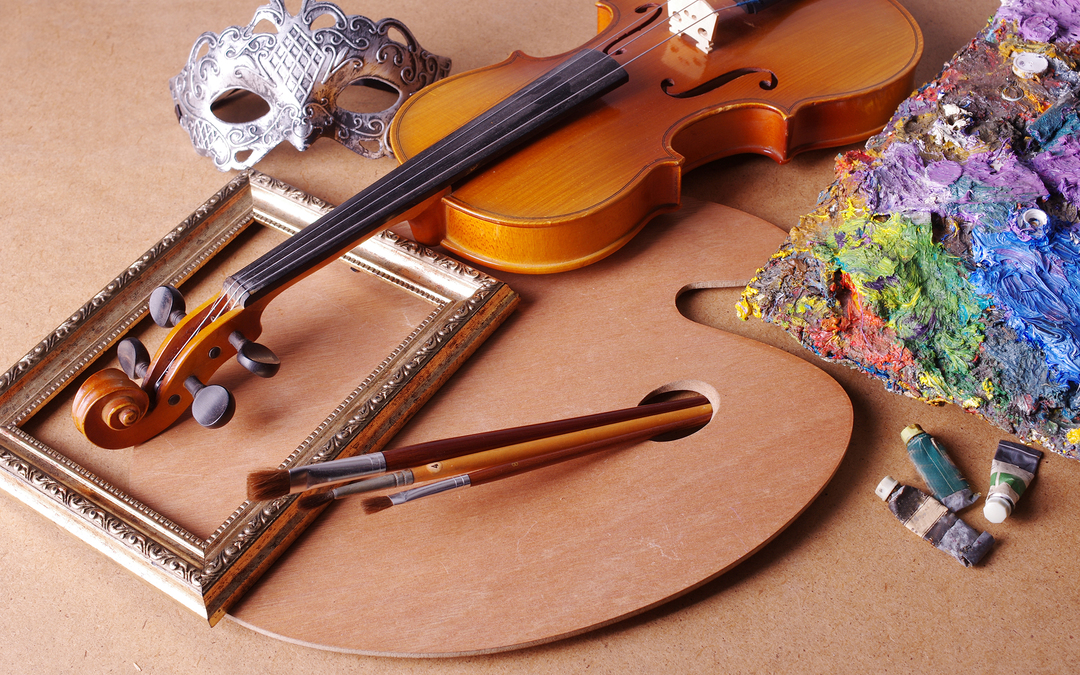Throughout medical school, students collect loosely connected islands of knowledge (even in integrated curricula) about health and disease. Later, in clinical practice, they encounter ‘whole’ human individuals, with conditions that have complex roots and effects within their lives. Thus, future physicians, and almost all health professionals, need to establish links between their knowledge fragments if they wish to treat people, not signs and symptoms of diseases. Connecting facts and drawing inferences is some kind of creativity that can lead to innovations transcending mere factual evidence. How can health professional education foster such thinking? Besides programs1 that aim to spur students’ creativity by working with examples from the practice and history of medicine, the arts and their reception may help here.
First, pieces of art derive from the artist’s ability to integrate a plethora of observations, often hidden for non-artists, about matter, sound, or human action; reception and performance of art also pull together a wealth of sensations that can open up new ways to view reality. Second, giving students some time to discover the arts lets them discover their own creativity without the performance pressure of lectures and courses. Third, types of arts such as theater pieces or symphonies give insight into what complex teamwork can achieve.
Educators at the Warren Alpert Medical School of Brown University wished to harness this power of the arts to foster creativity and knowledge de-fragmentation in students. They designed the Integrated Clinical Arts (ICA) program in which students select one workshop that matches their taste to explore their own creativity—without receiving marks. Offered activities include gallery visits, dancing, sculpturing, music composition; the instructors can be health professionals or patients with expertise in a certain area of the arts.
Anonymously filled evaluation forms show an enormously positive feedback about ICA workshops. Most students rated them as valuable for their studies, wished a repetition one year later (workshops take place only once per year), and gave positive feedback about their instructors. To cite one feedback about the theater workshop—taking up arts’ collaborative aspect—, a student wrote that it “is really about learning to connect with other people and work with them, an incredibly important skill in medicine”.
The benefits of such workshops can hardly be quantified by concrete evidence and outcomes. Collaborations with artists have been suggested2 to spur inspiration of scientists and physicians. In any case, grooming one’s creative traits and associative thinking without the pressure of marks and exams will be a worthwhile activity for students who want to be (and should develop into) doctors that find new ways for curing and treat each patient as a unique, complex person.
Mirko von Elstermann
Read more: Liou KT, Jamorabo DS, Dollase RH, Dumenco L, Schiffman FJ, Baruch JM. Playing in the “gutter”: cultivating creativity in medical education and practice. Acad Med. Epub 2015 Dec 1. http://dx.doi.org/10.1097/ACM.0000000000001018
See also [1]: Ness RB. Commentary: Teaching creativity and innovative thinking in medicine and the health sciences. Acad Med. 2011;86:1201-1203. http://dx.doi.org/10.1097/ACM.0b013e31822bbb9f
[2] Wellbery C. Art-science collaborations—avenues toward medical innovation. N Engl J Med. 2015;373:2495-2497. http://dx.doi.org/10.1056/NEJMp1509788

